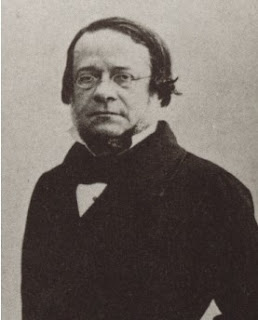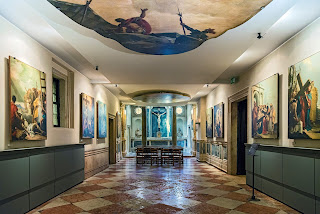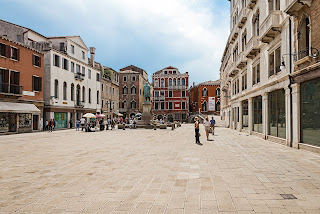Work led to closure of mental hospitals by law
 |
| Franco Basaglia was destined for an academic career until the University of Padua deemed him too unconventional |
As the founder of the Democratic Psychiatry movement and the main proponent of Law 180 - Italy's Mental Health Act of 1978 - which abolished mental hospitals, he is considered to be the most influential Italian psychiatrist of the 20th century.
His Law 180 - also known as Basaglia’s Law - had worldwide impact as other countries took up the Italian model and reformed their own way of dealing with the mentally ill.
Basaglia was born to a well-off family in the San Polo sestiere of Venice. He became an anti-Fascist in his teens and during the Second World War was an active member of the resistance in the city, to the extent that in December 1944, he was arrested and spent six months inside Venice’s grim Santa Maria Maggiore prison, being released only when the city was liberated in April of the following year.
He graduated in medicine and surgery from the University of Padua in 1949 and seemed destined for an academic career but after qualifying as a doctor in the field of ‘nervous and mental diseases’ and becoming an assistant professor he was deemed too unconventional for the tastes of the university hierarchy and told he should seek a career elsewhere.
 |
| Basaglia believed mental hospitals merely reinforced the health problems of patients |
It was a grim job. Gorizia, 140km (87 miles) from Venice, was like a remote outpost and psychiatrists at the time regarded it as a sign of failure if they were forced to work in asylums. But Basaglia felt he had no choice.
In his studies he had already become convinced that the conventional methods for handling psychiatric patients needed to change and the post at Gorizia offered him the chance to put his ideas into practice.
On his first day in charge, he refused to sign the permits for the restraint of prisoners. He had soon introduced a requirement that doctors did not wear white coats and instead mingled freely with patients. Locked wards were opened, and the use of shackles and straitjackets was quickly outlawed.
He felt the traditional institutional response to psychiatric patients in distress, which revolved around physical abuse, forced restraint and appalling ‘punishments’, did nothing except reinforce the presumed ‘insanity’ of the victims.
Although he faced opposition from the older staff, he gradually replaced them with doctors he felt shared his views. Amid the tide of radical thinking that was sweeping Italy in the late 1960s, he published a book, L’istituzione negata - The Institution Denied - describing the methods being employed at Gorizia. It became a bestseller and a TV documentary based on the book made him famous.
 |
| Basaglia believed strongly in the rehabilitation of the victims of mental illness sufferers in the community |
Basaglia left Gorizia in 1969, after which he a brief period in charge of the asylum in Colorno, near Parma, and six months in New York where he worked in a psychiatric hospital in Brooklyn. In 1971, he returned to Italy to be director of the San Giovanni psychiatric hospital in Trieste.
By then, other psychiatrists in Italy were putting Basaglia’s methods into practice and his ideas were acquiring political support. He repeated at the Trieste institution many of the measures that had proved successful in Gorizia, with the addition of such steps as launching co-operatives so that patients who were considered well enough could be re-integrated into the world of work. In 1977 he announced that the San Giovanni hospital was to close.
Soon afterwards, politicians successfully argued that a programme of closure should begin at psychiatric hospitals across the country.
 |
| Franca Ongaro continued Basaglia's work after his death |
In their place was to be a decentralised community service of treating and rehabilitating mental patients and preventing mental illness and promoting comprehensive treatment, particularly through services outside a hospital network. The emphasis in mental health moved from protecting society towards meeting the needs of patients.
Basaglia was described as a charismatic figure, so enthused about his work he would stay up all night talking with anyone who could match his intellectual stamina. He was also a heavy smoker. Sadly, by the time Basaglia’s Law came into force, he was suffering the effects of the brain tumour that would kill him.
He returned to San Polo, where he died in 1980 at the age of only 56. His wife, Franca Ongaro, who had worked with him on many of his books and essays, continued to work on his behalf after his death to ensure Basaglia’s Law was fully implemented.
 |
| The Basilica Maria Gloriosa dei Frari is one of the most notable churches in the San Polo sestiere of Venice |
San Polo, the smallest of the six Venice sestieri, is a vibrant district on the west side of the Grand Canal connected to the eastern side by the Rialto Bridge. The main sights include the Rialto Market, the 15th century Gothic church of San Polo and the imposing Basilica di Santa Maria Gloriosa dei Frari, usually just called the Frari, built in brick in the Venetian Gothic style and containing monuments to distinguished Venetians buried in the church, including a number of Doges and the painter Titian, who painted two large and important altarpieces that can be seen inside, the Assumption of the Virgin on the high altar and the Pesaro Madonna. where stalls sell fish, fruit and vegetables. The canalside Erbaria area has become a fashionable meeting place for aperitifs and cicchetti - the small snacks that are a kind of Venetian tapas.
 |
| The Piazza della Vittoria is the central square in the town of Gorizia, on the Italian border with Slovenia |
Gorizia has the look of an historic Italian town but it has changed hands several times during its history, which is not surprising given its geographical location. It sits literally on the border with Slovenia and, in fact, is part of a metropolitan area shared by the two countries, the section on the Slovenian side being now known as Nova Gorica. It has German, Slovenian, Friulian and Venetian influences, which can be experienced in particular in the local cuisine.
More reading:
Roberto Assagioli - the psychiatrist locked up by Mussolini
Cesare Lombroso, the father of modern criminology
The 1848 revolt in Padua, when students joined citizens in armed uprising
Also on this day:
1544: The birth of the poet Torquato Tasso
1847: The birth of wartime politician Sidney Sonnino
1851: Verdi's Rigoletto performed for first time
Home




